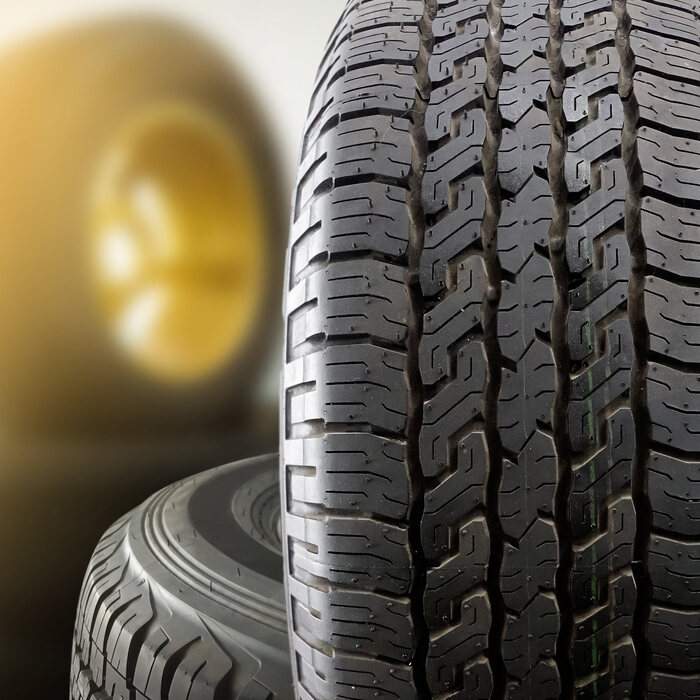HOW TO STORE SUMMER TYRES CORRECTLY
After removing summer tyres to swap for winter or all-season tyres, it’s important that you store them correctly.
By ensuring summer tyres are correctly cleaned, protected, and stored, the next time they’re used there should be no unexpected problems or damage.
What’s the difference between summer, winter, and all-season tyres?
Summer tyres are sleek, with less prominent treads that allow the vehicle to grip the road in warm conditions, either wet or dry.
Winter tyres have a much chunkier appearance, with deep treads and sipes, which give the tyre traction when used on cold roads, and in snow and icy conditions.
All-season tyres combine aspects of both summer and winter tyres, which means they can be used year-round. All-season tyres are a good middle-ground tyre, however, they are likely to struggle during periods of ice and snow.
When should you use summer tyres?
Summer tyres should be used when the temperature is consistently warmer than seven degrees celsius. When the temperature drops below seven, you should change from summer tyres to all-season or winter tyres.
Due to the hard rubber compound summer tyres are made from that enable them to perform in warm temperatures, it’s important that when they’re not being used, they’re stored correctly to protect them over the winter months.
Storing summer tyres
It’s important to understand how to store summer tyres correctly, otherwise it’s possible for them to become damaged even though they’re not being used.
Preparing summer tyres for storage
Before you put your summer tyres to bed for the winter, you’ll need to make sure they’re clean. A good place to start is by using a pressure washer if you have one. If not, use a tyre brush, along with water and detergent, and give them a good scrubbing, preferably outside as it can be a dirty job.
This is also a good time to clean your wheels, as they can get especially dirty after being used during the summer and part of autumn.
Make sure the tyres are dry. A towel is a good place to start, but it can be difficult to get between the tyre treads. You will need to allow the tyres to air dry to ensure they’re completely dry before being stored.
Tyres don’t need to be coated in any kind of dressing prior to storage. Seasonal tyres are specifically produced to handle harsh conditions, and any kind of dressing may potentially mean the lifespan will be affected,
Where to store summer tyres
Choosing the right spot to store summer tyres correctly is imperative. As previously mentioned, summer tyres are designed for use in temperatures above seven degrees celsius, which means harsh temperatures can lead to cracks.
Tyres should be stored inside, in a dry space and preferably beneath a protective cover. Ensure the temperature remains as stable as possible - ideally above seven degrees celsius - as even when not being used, extreme cold can affect the tyre’s hard rubber compound.
Storing your tyres in an airtight bag will ensure that no contaminants will damage them while in storage. If this isn’t possible, cover them with a plastic or other type of clean sheet.
As UV rays can weaken the rubber, you should avoid exposing stored summer tyres to direct sunlight, and avoid locations that are likely to be overly humid.
Avoiding chemical damage
It’s vital that the tyres are stored where they’re protected from harmful chemical exposure, specifically ozone particles in the air. Even small traces of ozone can attack the tyres rubber compound and cause cracks, so avoid storing your summer tyres in a location where they’re likely to come into contact with this.
This includes generators, fuel, furnaces, compressors, solvents, and lubricants.
Keeping white rubber white
If any part of your tyres have white rubber - including white lettering - be aware that due to the slight differences in the rubber compared to standard rubber, the white can discolour during storage. To avoid this, ensure that white rubber is only touching other white rubber. Alternatively, individually cover each tyre.
Can you stack or hang your tyres?
To ensure the least amount of stress and pressure on your tyres, standing them is the most ideal way to store your summer tyres.
If space is an issue and standing the tyres isn’t an option, stacking the tyres is fine. However, avoid stacking the tyres too high, as the higher the stack the greater the risk of them falling. Tyres are heavy, and can cause damage to anything they may fall on - you included - as well as cause damage to themselves.
If the tyres have rims, stacking or hanging are both great options. However, unmounted tyres shouldn’t be hung, as this can lead to the tyres losing their shape.
How long do summer tyres last in storage?
If stored correctly, avoiding exposure to UV rays, ozone, fluctuating temperatures, and oxygen, stored summer tyres will last through the winter months without any additional damage.
When unused and stored correctly, tyres can last as long as a decade. However, if you’ve used them during the summer months they will of course have worn to some degree, so every time you change your tyres, ensure that they meet the legal requirements before using them.
Buy your tyres online today
Now that you know how to store summer tyres correctly, we’d recommend using summer tyres during the warmer months to get the best performance out of your vehicle. Just Tyres has a wide selection of summer and other seasonal tyres available, and you can buy your tyres online today.






 Same Day Fitting. Order By 10:30am
Same Day Fitting. Order By 10:30am
 39 Nationwide Fitting Centres
39 Nationwide Fitting Centres
 5 Year Warranty On All Tyres
5 Year Warranty On All Tyres
 Price Check Promise. Always Great Deals
Price Check Promise. Always Great Deals

 Find a Centre
Find a Centre

